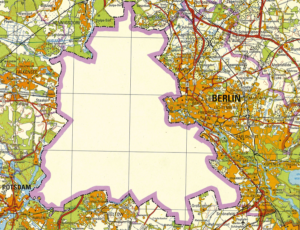/ To our Private Equity clients and friends: take the risk, not the uncertainty
 Intense competition for Private Equity has been a reality for a few years now. But recently we have started to observe a new and pernicious effect of this increased competition. Sellers, management and intermediaries provide less information about the target; they answer less questions; more critical information is off limit. Sellers venture less information about the top line, the bottom line or the target company clients. Management is less available and answers less questions. And why would they answer more and give more, since the competition is sufficient to see the deal go through?
Intense competition for Private Equity has been a reality for a few years now. But recently we have started to observe a new and pernicious effect of this increased competition. Sellers, management and intermediaries provide less information about the target; they answer less questions; more critical information is off limit. Sellers venture less information about the top line, the bottom line or the target company clients. Management is less available and answers less questions. And why would they answer more and give more, since the competition is sufficient to see the deal go through?
Of course, we would admit right away that we have a vested interest here. This makes our job harder because we are a company relying on data to do our job. However, this new trend has a much more profound and negative impact on portfolios, on investment outcomes, and ultimately on private equity funds’ future. Because when there is less data, less knowledge, and less understanding of the target company, there is more uncertainly. This trend leads to this: more uncertainly is making its way into private equity portfolios.
The key here is this: uncertainty is different from risk. More uncertainty is not the same as more risk: it leads to something different.
Increased competition pushes private equity managers to pay higher prices and deploy more equity for the same asset, thus increasing the risk. When private equity managers deploy the same amount of capital under increased competition, they have a lower return on capital since they acquire assets of lesser value (e.g. less revenue or EBITDA). Increased risk and lower IRR are the two sides of the same coin. They are not exactly the same thing, but they are both measurable.
Not so with uncertainly. Let’s illustrate this with an example – an abstract one, but nonetheless real. Imagine that you are considering buying a company in a market composed of six segments where three are growing and three are contracting with the prospect of disappearing. You would expect a distribution where some companies will fail and others will succeed depending on their exposure to growing or contracting segments. If we could do our job properly, we would be able to place the target company on this distribution and determine – and we mean with numbers, not opinions – the underlying risk of acquiring the asset. Now, imagine that you know that there are six segments, half growing and half failing, but you do not know which segments the target company is sitting on. This is uncertainty.
Uncertainty introduces a distinct new dimension to the potential outcomes. If you take a game of coin toss as an example, you would have two possible outcomes: heads or tails, with a distribution that is measurable. With uncertainty there is now the possibility that the coin could turn into dust in mid-air. And you do not know – and cannot measure – the probability of this happening.
In Private Equity uncertainty translates into increased rate of failure for portfolio companies. Many of us were around in the years 2008 – 2010, it was not that long ago. Just think of five names of funds that failed in these years, and disappeared. We bet that they did not fail because their IRR lost a few points and their portfolio failure rate remained about the same. These are the ones that survived. In fact almost ALL funds that survived experienced reduced IRR and resilient failure rate. The ones that disappeared had a dramatically increased failure rate. It is one thing to take the risk, it is quite another to take the uncertainty.
By design we work with Private Equity funds that analyze targets in depth, measure risk and think carefully about potential outcomes. Today, many of our clients and friends are frustrated because they cannot properly assess the risk and reduce uncertainly. They end up losing deals to competitors who ask fewer questions and accept more uncertainty. To our friends we say this: do not regret, walk away and do not take the uncertainly. It is a matter of survival.
This article was originally published as a blog post on our corporate web site: http://www.sokrates-advisors.com
The 1988 map of East Berlin comes from here: https://360.here.com/2014/11/06/fall-wall-missing-pieces/